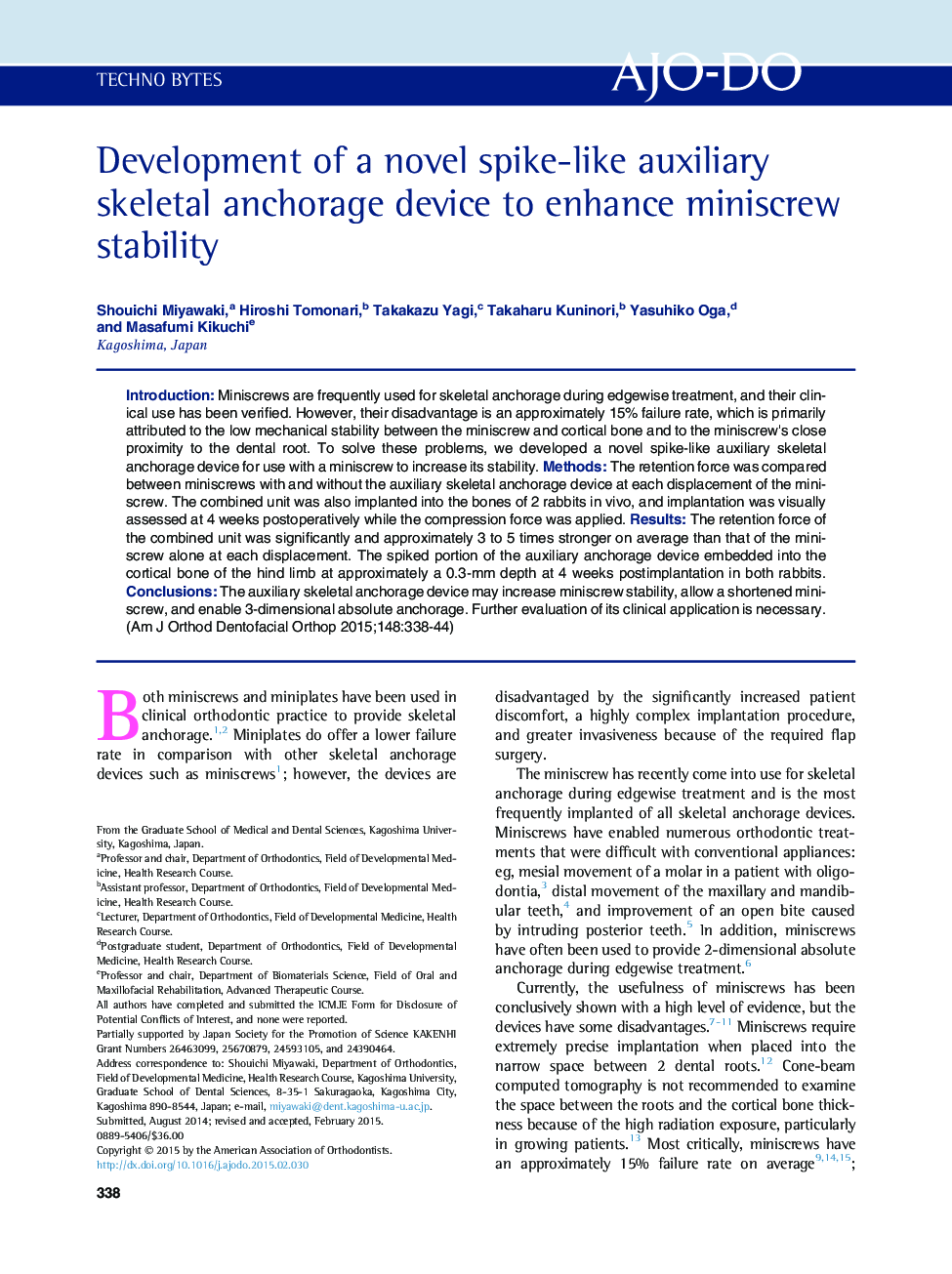| Article ID | Journal | Published Year | Pages | File Type |
|---|---|---|---|---|
| 3115616 | American Journal of Orthodontics and Dentofacial Orthopedics | 2015 | 7 Pages |
•We developed a novel spike-like auxiliary skeletal anchorage device.•This device enables automatic embedding of the spiked portion into the cortical bone.•This device enhances miniscrew stability 3 to 5 times that of a miniscrew alone.•This device allows a shortened miniscrew.•This device enables 3-dimensional absolute anchorage.
IntroductionMiniscrews are frequently used for skeletal anchorage during edgewise treatment, and their clinical use has been verified. However, their disadvantage is an approximately 15% failure rate, which is primarily attributed to the low mechanical stability between the miniscrew and cortical bone and to the miniscrew's close proximity to the dental root. To solve these problems, we developed a novel spike-like auxiliary skeletal anchorage device for use with a miniscrew to increase its stability.MethodsThe retention force was compared between miniscrews with and without the auxiliary skeletal anchorage device at each displacement of the miniscrew. The combined unit was also implanted into the bones of 2 rabbits in vivo, and implantation was visually assessed at 4 weeks postoperatively while the compression force was applied.ResultsThe retention force of the combined unit was significantly and approximately 3 to 5 times stronger on average than that of the miniscrew alone at each displacement. The spiked portion of the auxiliary anchorage device embedded into the cortical bone of the hind limb at approximately a 0.3-mm depth at 4 weeks postimplantation in both rabbits.ConclusionsThe auxiliary skeletal anchorage device may increase miniscrew stability, allow a shortened miniscrew, and enable 3-dimensional absolute anchorage. Further evaluation of its clinical application is necessary.
